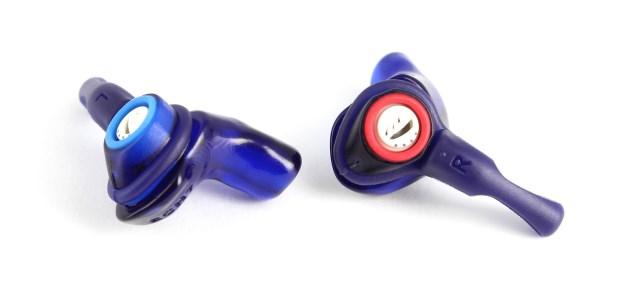
How to Choose the Most Effective Hearing Protection?
Decision makers must consider that in many cases, workers have to wear hearing protection for eight hours.
Selecting the right hearing protection is not always an easy task. One of the most important duties that a safety manager has is to choose the right protection, one that employees will wear 100 percent of the time they are exposed to noise. Factoring in cost and usage is also important; most companies spend on average 30 cents per person per day on hearing devices, such as disposable ear plugs. Investing in a more cost-effective and efficient form of hearing protection is ideal.
There is a plethora of options on the market, but selecting the protector most appropriate to your needs and the needs of your workers will help ensure the adaptation of this device. So one may ask, "Which hearing protection is the right protection?" Well, the answer to that is actually quite easy—the best protection allows for these four benefits: It is comfortable, allows for communication, is convenient, and is eco-friendly.
Here are four of the most common hearing protection devices on the market:
- Custom ear plugs
- Disposable ear plugs
- Ear muffs
- Reusable ear plugs
Discover how each device compares to the others and the benefits they bring to the individual user. Here are the top four factors to consider when choosing a device:
#1. Comfort: The hearing protector "is forgotten."
The more comfortable the device, the more likely your employees are to forget they are wearing hearing protection. But what is comfort?
- The employee is free to move.
- The protector is lightweight, discreet.
- The ear plug is comfortable to wear and perfectly adapted to the morphology of each ear.
Decision makers must consider that in many cases, workers have to wear hearing protection for eight hours. Having a device that does not fit properly will force workers to remove the protection from their ears, thus exposing them to dangerous levels of noise at various points throughout their work shift. Comfort is one of the most important, and most overlooked, factors when selecting a protector.
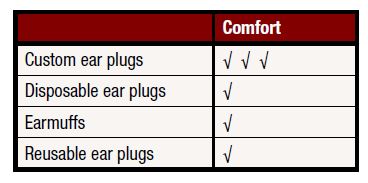
#2. Communication: Employees have the need to communicate at their workstations.
Beyond useability, communication in a noisy environment is important to transmit information or respond to safety instructions:
- Your employees stay in touch with the sounds of their environment, including warning signals.
- They wear their hearing protectors 100 percent of the time spent exposed to noise.
- They speak to each other quietly, they are happier, and more peaceful at the end of the day.
Employees remove their hearing protectors often throughout the day. This can be because of their need to talk to colleagues and supervisors or hear orders over PC systems. Removing the hearing protector for just two minutes during an eight-hour work shift reduces the effectiveness of that device up to 25 percent. Choose a hearing protection device that allows you to safely communicate while exposed to dangerous levels of noise.
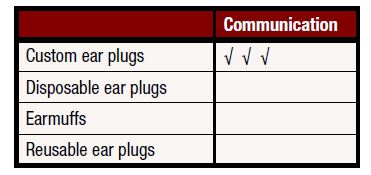
#3. Convenience or ease of use: Convenience is key for employees' adoption.
Accessibility and simplicity in use are critical factors in the successful implementation of hearing protectors.
- The hearing protector is easy to implement.
- It adapts to the habits of the employee and his work environment, with or without handles, with or without cord.
- The hearing protector is compatible with other personal protective equipment.
Choose a hearing protector device that is easy to keep up with. Clips, cords, and other accessories may help with reducing the loss of protectors. This can also help companies reduce the cost of having to replace protectors often. Easy and accessible is the way to go.
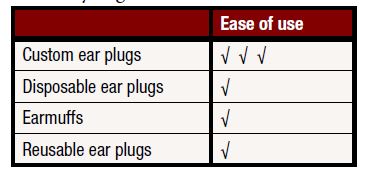
#4. Eco-friendly: Use hearing protection devices that are easy to clean and reduce waste.
A device that is placed into the ear canal or in contact with the skin must remain clean—for various sanitary reasons. Maintenance is therefore important for pleasant use throughout the lifetime of the protector.
- Hearing protectors are hypoallergenic or biocompatible.
- A maintenance kit is provided to ensure that protectors are in proper working order and maintain the quality of their use.
- Maintenance is simple and takes only a few minutes per week.
Sanitary hearing protection devices are also important to the workers' health and well-being. Work environments with heavy debris, humidity, and dust raise the chances of workers getting ear infections.
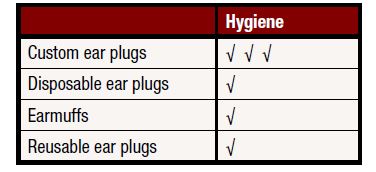
Takeaway
Choosing the right hearing protection is vital to you and to your workers' hearing health. Taking into consideration the four factors above will help decision makers in selecting a device most appropriate to the needs of the worker and his or her environment. Not all devices are equal, and selecting the right hearing protection will ensure that employees are safe from Occupational Noise-Induced Hearing Loss (ONIHL) and other occupational diseases.
Remember, hearing loss is permanent but 100 percent preventable. Take the appropriate steps to safeguard yourself and your employees from the effects of dangerous levels of noise.
This article originally appeared in the May 2017 issue of Occupational Health & Safety.